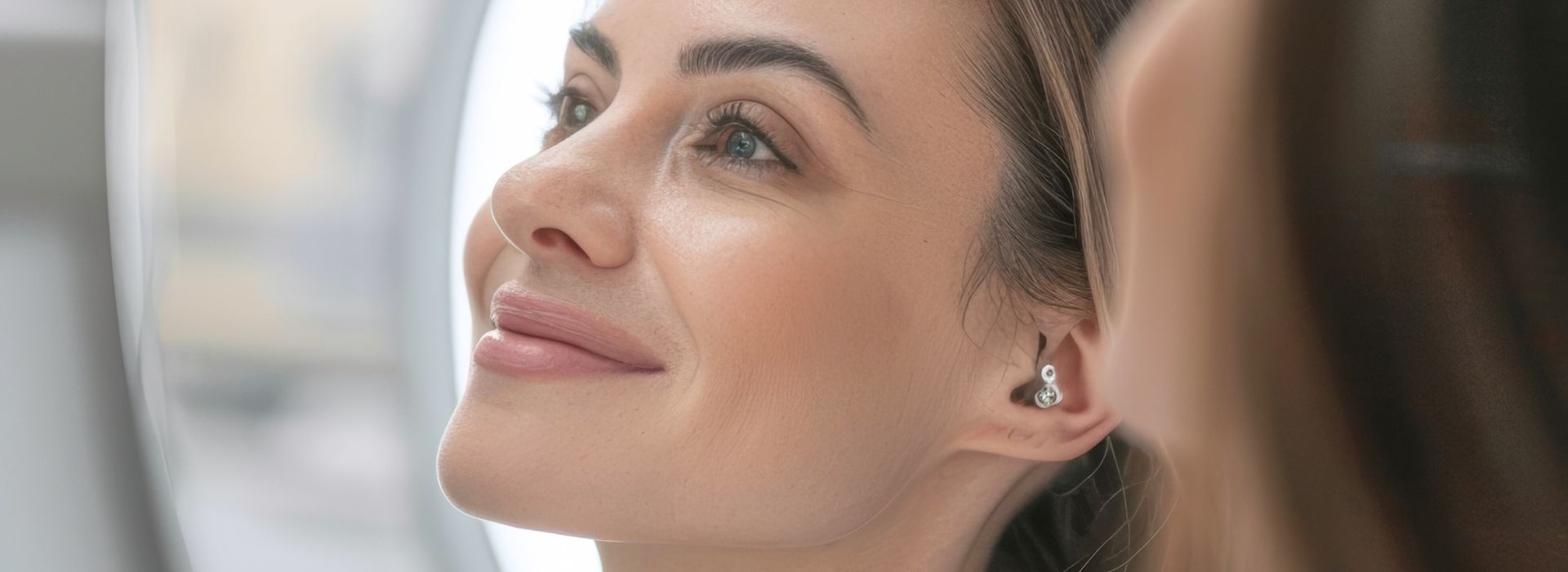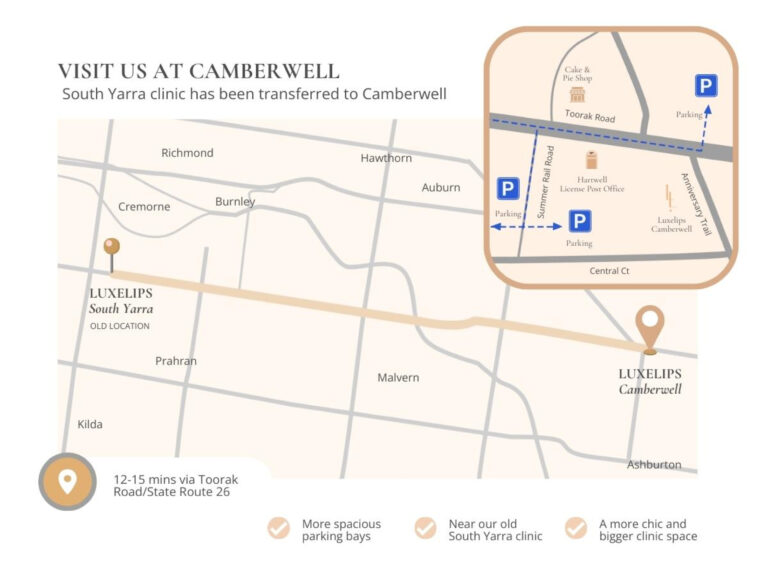Disclaimer: This blog is intended for general educational purposes only and does not constitute medical advice or advertising of regulated health services. Any references to treatments or procedures are provided for informational awareness and should not be interpreted as recommendations or promotions. For personalised advice, please consult a qualified healthcare professional.
Knowing your skin type and characteristics can help keep your skin healthy and radiant. While there are many different ways to classify skin types, the most common method divides into five categories: dry, normal, oily, sensitive, and combination. Each type has unique characteristics, which are essential when choosing products for skincare routines or other beauty treatments.
Which Skin Type Do You Have?
You may be asking right now which skin type you have, how to identify your skin type and the different skin types with their specific characteristics. Here’s a quick guide for you to identify your skin type:
Oily
People with oily skin tend to have large, visible pores on their face and back due to an overproduction of sebum from their sebaceous glands. This excess sebum clogs up pores and traps dirt, leading to acne problems if not treated properly. Oily skin produces fewer natural oils than normal or dry skin types, so it tends to be drier than normal or dry types. Oily skins may also experience redness, visible capillaries, blemishes, and scars due to their overactive sebaceous glands. Sebaceous glands produce more oil than the body needs, causing breakouts or acne.
Oily skin produces excessive sebum that can cause blockages in the pores and lead to breakouts. Genetics or hormones are some of the causes of having oily skin. It is prone to acne breakouts and scarring. Products containing salicylic acid or benzoyl peroxide help reduce oil production in the pores.
Dry
Dry skin lacks enough moisture to maintain a healthy balance between oil production and water retention, which leads to flaking and tightness. Dryness is another cause of wrinkles and fine lines in the long term. Dryness can also make dark spots look darker if left untreated over time due to the lack of oil production needed to keep them at bay.
Dry skin doesn’t produce enough oil to keep itself moisturized, which causes it to become flaky and scaly, like dandruff. Dry skin often feels tight after washing it with soap or other cleaning products. These products may strip away essential oils from the surface of your face that protects against moisture loss in cold weather conditions (winter).
Normal
Normal skin is the most “ideal” type of skin. It’s usually soft, smooth and even-toned, or slightly oily. The sebaceous glands produce an average amount of oil for the face, and the pores are normal in size.
Sensitive
Sensitive skin is prone to redness, irritation, and rashes when exposed to products or environments such as extreme temperatures or sunlight. This type of skin often needs special care so that it doesn’t become irritated quickly by makeup products or soap-free cleansers. People with sensitive skin need to use milder products containing ingredients like aloe vera gel or chamomile extracts. These help calm down any redness after using harsher products on their faces.
Combination
Combination skin is a combination of both dry and oily areas on the face. This skin type leads to an uneven appearance in areas such as the forehead or nose, where there might be more oil than usual. In contrast, areas like cheeks show signs of dryness that require extra moisturizing care products designed specifically for combination skin types.
Treatments That May Help Improve Skin Appearance
Taking care of your skin isn’t one-size-fits-all. Each skin type—whether oily, dry, sensitive, or combination—requires specific attention and care. While there are many over-the-counter skincare options, some individuals also explore cosmetic aesthetic treatments to support their skin health and confidence.
Before starting any new skincare or treatment routine, it’s important to first understand your skin type and consult with a qualified healthcare professional to determine what’s appropriate for your individual needs.
For Oily or Combination Skin
Oily skin can be prone to congestion, enlarged pores, and breakouts. Over-the-counter products containing ingredients such as salicylic acid or benzoyl peroxide are often used to help remove excess oil and unclog pores. However, these products may not be suitable for everyone and can sometimes cause irritation.
Some cosmetic treatments that may be discussed during a consultation include:
- Chemical peels: These use specific solutions to exfoliate the skin’s surface, helping to remove dead skin cells and reduce the appearance of uneven texture or congestion. Peels vary in strength and composition and should only be performed under professional supervision.
- Microdermabrasion or skin exfoliation procedures: These may help improve skin texture by removing the outer layer of dead skin cells. This is often recommended for individuals looking to refresh dull or uneven skin.
For Dry or Sensitive Skin
Dry skin can appear flaky or dull and may be more prone to irritation. A professional may suggest hydrating treatments that support moisture retention in the skin’s outer layers.
- Skin hydration treatments: Some non-surgical cosmetic treatments use injectable moisturising agents designed to support skin hydration from within. These often contain hyaluronic acid, a substance naturally found in the body that helps retain moisture and support skin structure.
- Barrier-supportive skincare: Gentle cleansers and moisturisers that support the skin’s natural barrier can be essential for managing sensitivity.
Addressing Common Skin Concerns
Several non-invasive treatments are also commonly discussed for addressing:
- Fine lines and facial wrinkles
- Pigmentation and sun damage
- Mild scarring or uneven texture
Some of these treatments may include energy-based therapies, advanced skin needling techniques, or targeted injectable treatments that work with your body’s own repair processes. It’s essential that these procedures are performed by qualified medical professionals to ensure they are safe, suitable, and tailored to your specific needs.
Tailored Skincare Support in Melbourne
If you’re unsure which treatment might suit your skin, scheduling a consultation with a qualified practitioner is the best first step. At Luxe Lips in Melbourne, a range of cosmetic aesthetic treatments is available, with personalised plans created based on your facial anatomy, skin condition, and goals.
All procedures are performed by trained professionals in accordance with Australian health guidelines. A full consultation will help determine whether a treatment is appropriate, and what results you can realistically expect.
Disclaimer: All cosmetic medical procedures carry risks and require an in-person consultation with a qualified health practitioner. Results vary between individuals. This content is for educational purposes only and does not constitute medical advice.





